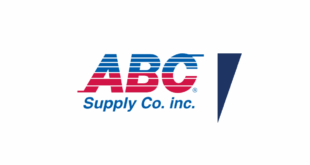Business as a whole has changed because of the pandemic, and marketing is one area that has seen some big shifts in strategies during COVID-19 disruption. Businesses of every type must adjust and adapt to these changes or leave themselves in a vulnerable position.
Harvard Business Review published an article laying out 10 Truths About Marketing After the Pandemic, looking at how some core marketing truths have changed in the last year. Here’s a closer look at five new truths independent home improvement retailers can harness to shape future marketing strategies.
1). Old truth: Marketing begins with knowing your customer. New truth: Marketing begins with knowing your customer segment.
Many home improvement retailers already focus on customer segments because their audiences are generally consumers in the immediate city or zip code. Other ways retailers can break down customers into different segments is by demographics, such as age and gender, and attitudes and interests.
The EY Future Consumer Index sorts audiences into five segments based on their spending motivations. These segments (customers who are focused on affordability first, health first, planet first, society first or experience first) offer another way to better personalize marketing.
2). Old truth: You are competing with your competitors. New truth: You are competing with your own digital offerings.
With Generation Z growing up with technology in their hands and more and more people joining the digital world, consumers were expecting digital engagement from businesses long before COVID-19 hit. According to Statista, as of January 2021, there were 4.66 billion internet users worldwide, almost 60 percent of the world’s population.
Having an online presence and a digital marketing strategy doesn’t have to be your whole marketing strategy, but should be a large part of it. Look at adding e-commerce, managing business pages on social media channels, investing in email marketing or even just keeping your Google Business and Yelp listings up to date, and always look to improve on what you offer.
3). Old truth: Customers hope you have what they need. New truth: Customers expect you to have what they want.
The more that retailers delivered during the pandemic, the more consumers came to expect from companies. Whether intentional or not, many retailers set the bar high during COVID-19 for customers. They need to continue to deliver to keep those customers, keeping services like online shopping and curbside pickup.
Putting customers first now goes beyond good customer service and selling what the customer needs. They expect consistent communication and your strategies should constantly evolve to connect and engage online and in person. Retailers’ marketing should also meet customers where they are, and may have to include a variety of targeted marketing strategies.
4). Old truth: Agility is a technology process. New truth: Agility is a modern marketing approach.
COVID-19 proved for every retailer the importance of flexibility. Being able to pivot became an everyday necessity, rather than a skill practiced only once in a while. In marketing, retailers had to consider whether any advertising images included masks or social distancing.
Marketing during the pandemic also required faster decision-making and being willing to allocate budgets differently. Going forward, being able to pivot and adjust on the fly in marketing will help a retailer maintain those hard-earned customer relationships.
5). Old truth: Your brand should stand behind great products. New truth: Your brand should stand behind great values.
When supply chain issues occurred during COVID-19, customers became much less brand loyal, buying whatever was available. The EY Future Consumer Index found that 61 percent of consumers were willing to switch brands during the pandemic.
The pandemic wasn’t the only factor changing minds; social issues also made consumers think twice about companies they supported. In the home improvement industry, brands and products are important, but retailers can also focus on values in their marketing strategies. Consumers want quality products, but are also looking at other factors like sustainability, ethical sourcing and social responsibility.
 Hardware Retailing The Industry's Source for Insights and Information
Hardware Retailing The Industry's Source for Insights and Information







